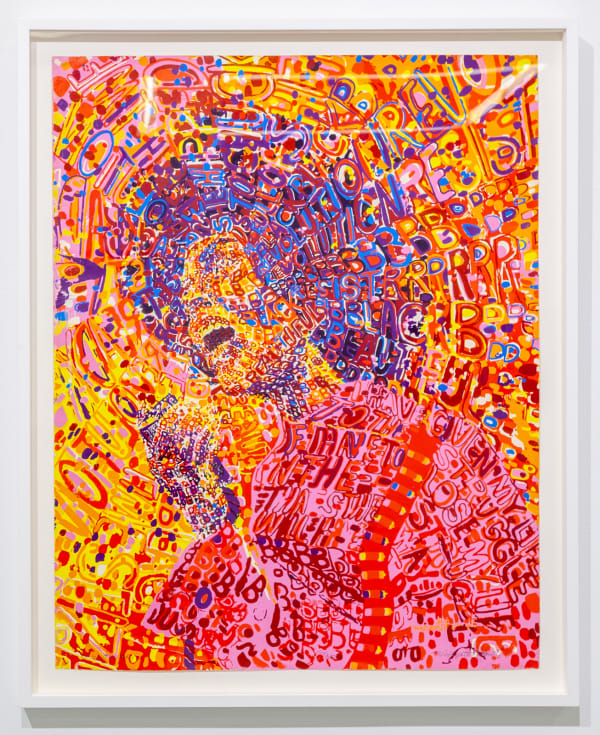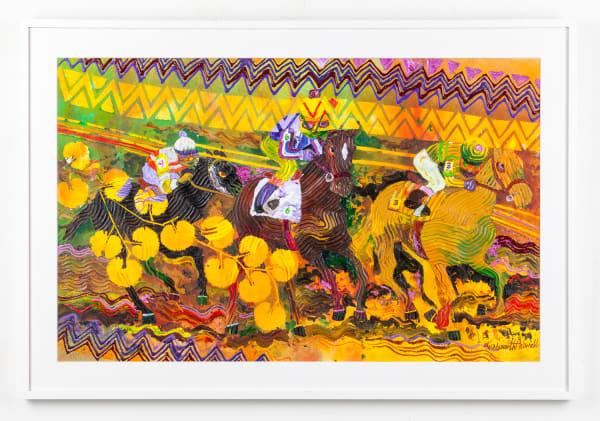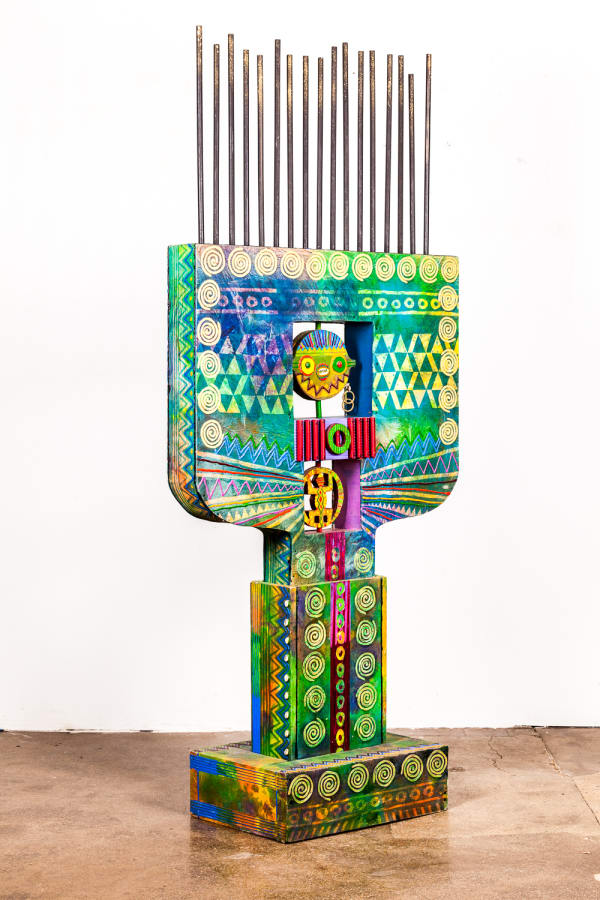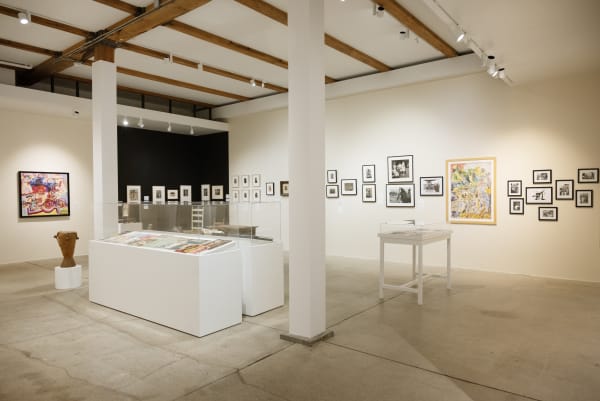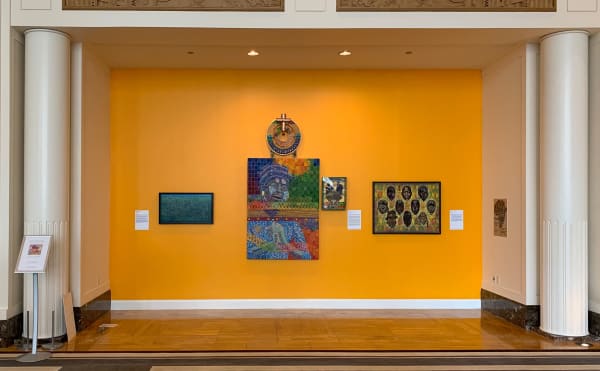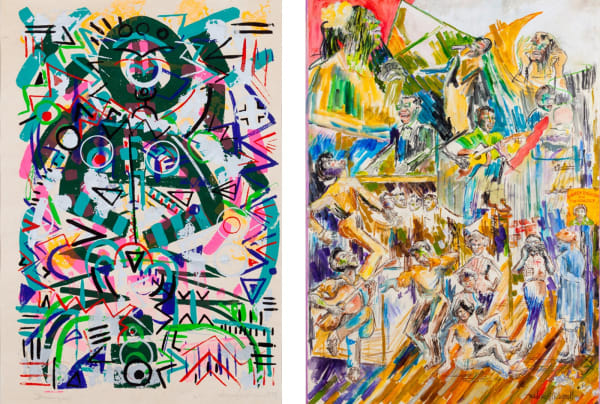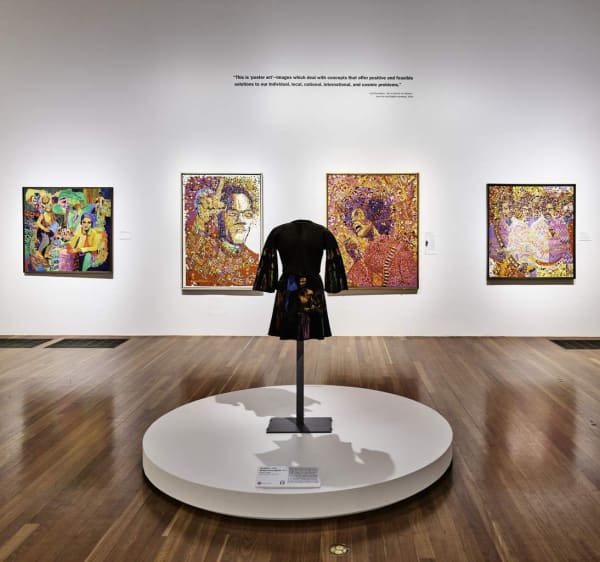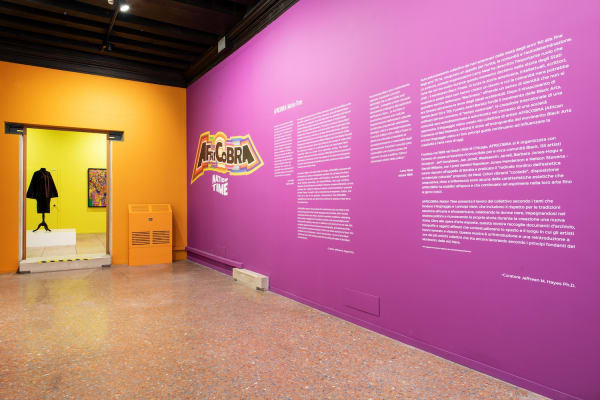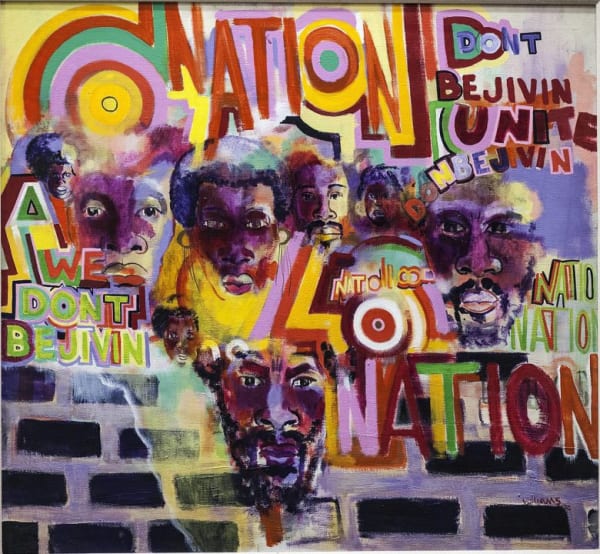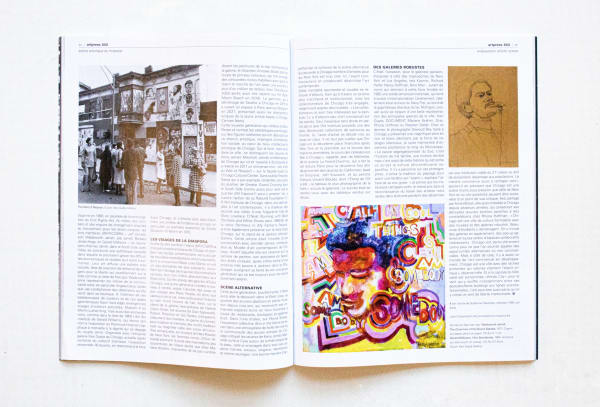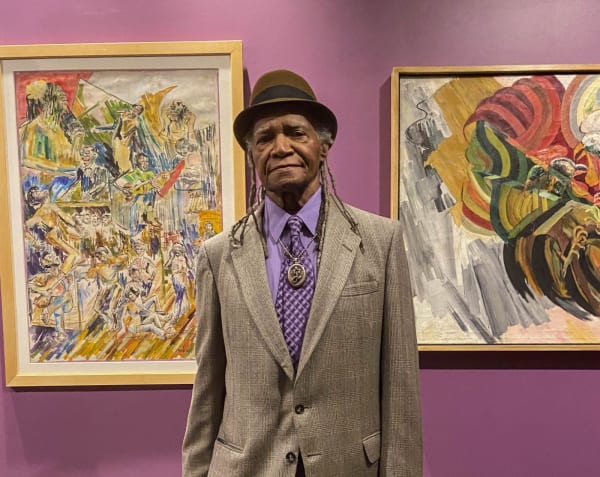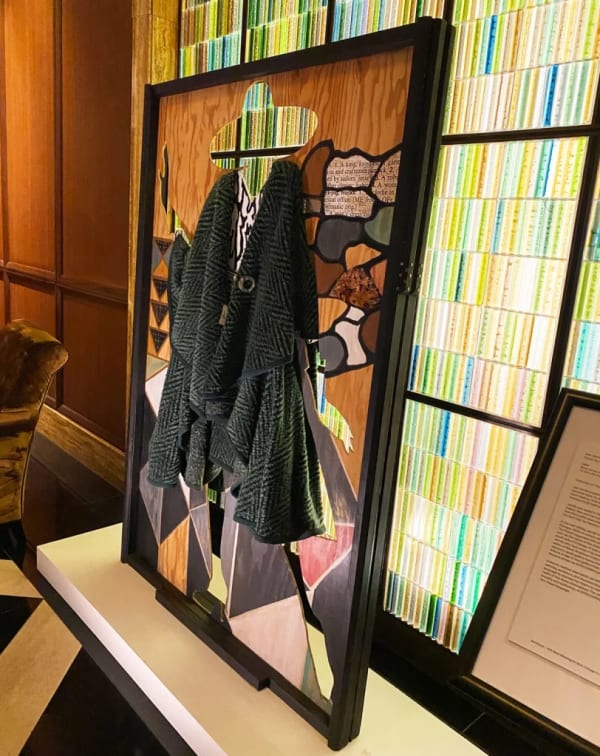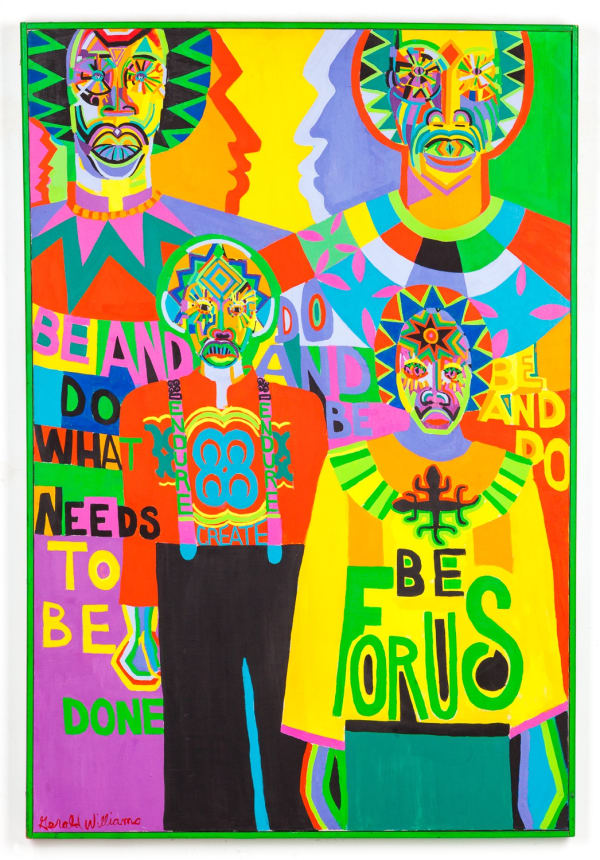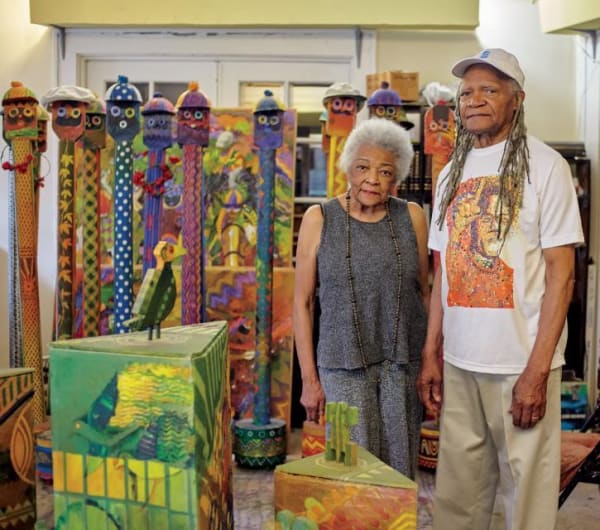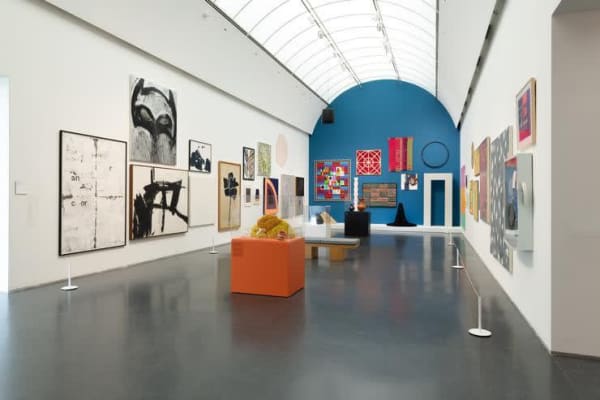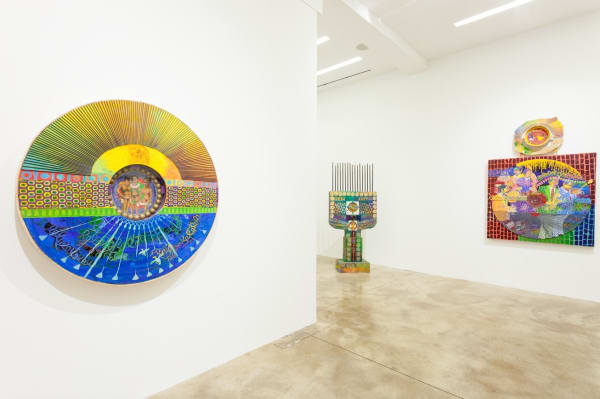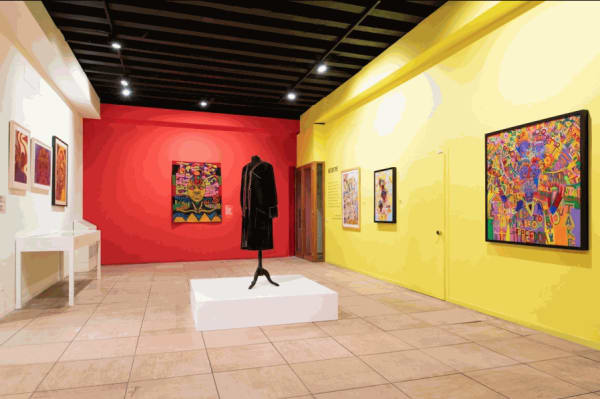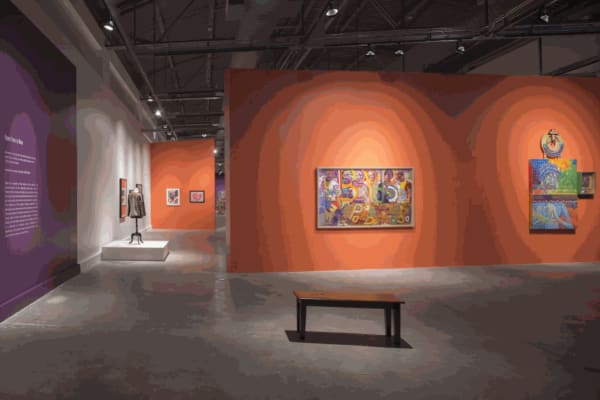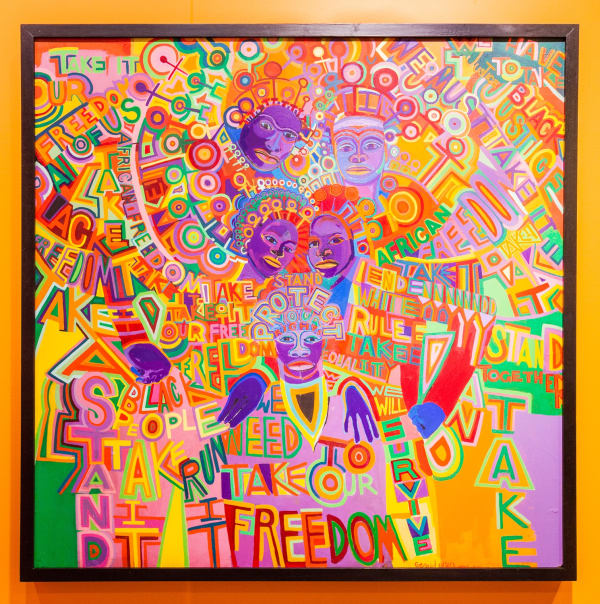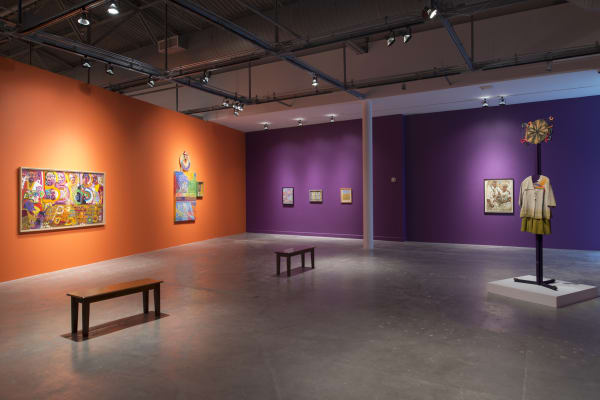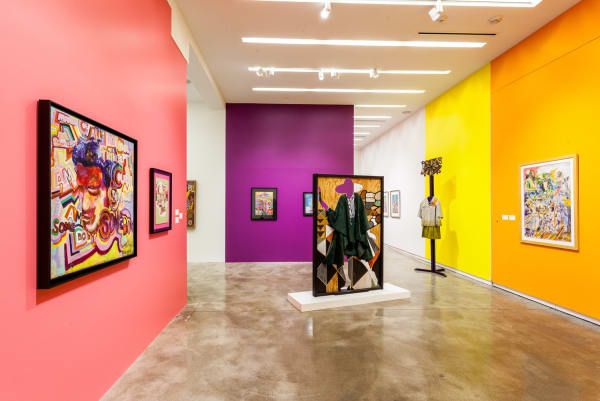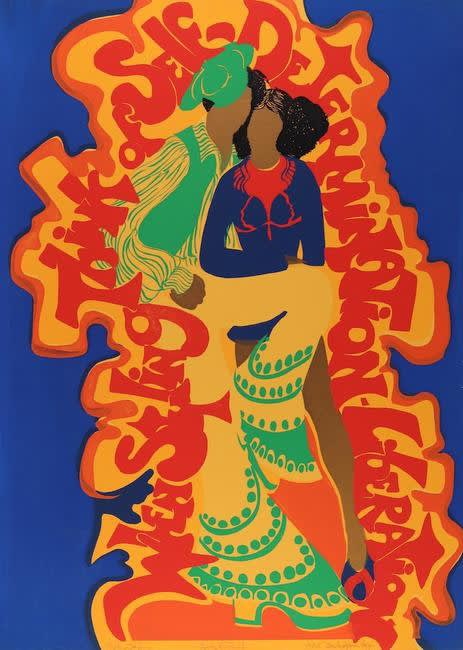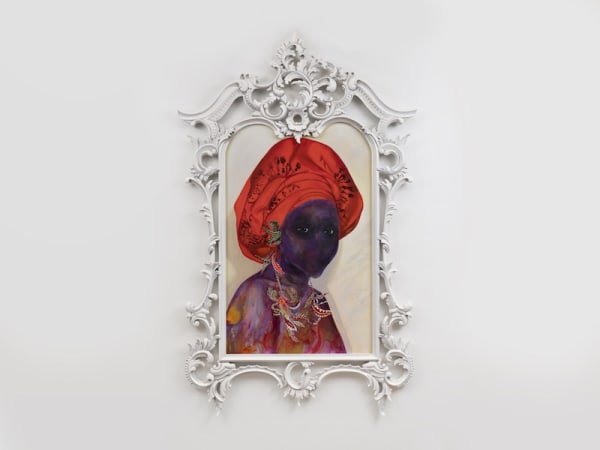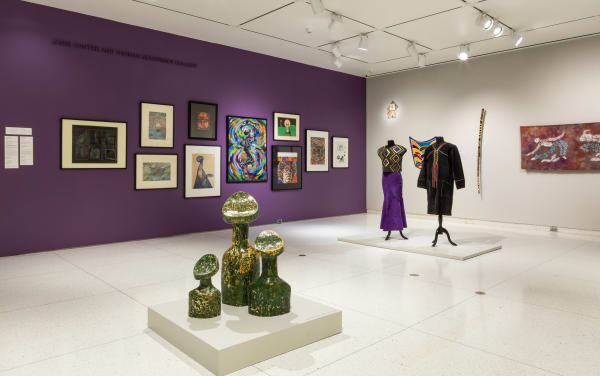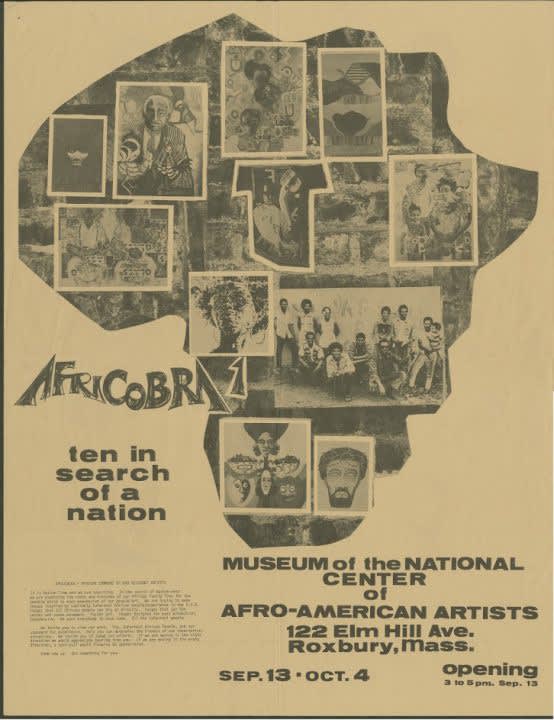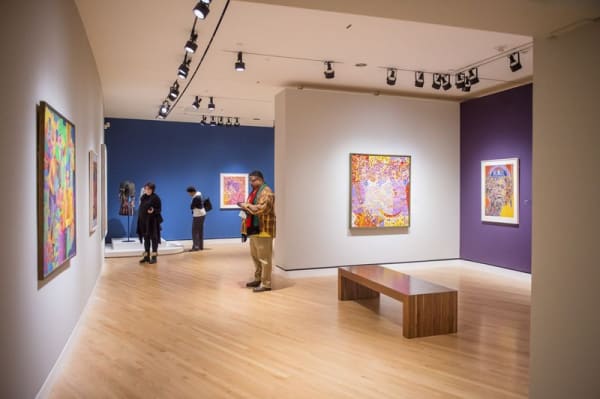Wadsworth Jarrell USA, b. 1929
Wadsworth Jarrell is an internationally acclaimed painter and sculptor. Jarrell was one of the original five founders of the Black arts collective AFRICOBRA, which was formed on the South Side of Chicago in 1967.
Born in Albany, Georgia, Jarrell was raised on a working farm, where he recalls being inspired at a young age by the art in the Saturday Evening Post. His artistic inspirations were encouraged during his enrollment in the US Army, where he became the company artist for his unit. After his service in the army, Jarrell enrolled at the Art Institute of Chicago, where he earned his BA in 1958.
Jarrell stayed in Chicago after college, establishing his painting practice on the city’s South Side. There, he became acquainted with the city’s burgeoning community of Black artists, designers, performers, musicians and writers, including fellow artists and future AFRICOBRA founders Jeff Donaldson, Gerald Williams, Barbara Jones-Hogu, and his future spouse Jae, whom Wadsworth met while shopping in her vintage clothing boutique.
Wadsworth and Jae soon became involved in the Organization of Black American Culture (OBAC), a collective of artists who went on to create the famous Wall of Respect, one of the key works in the burgeoning urban mural movement of the 1960s. Wadsworth and Jae also opened a small gallery below their home and studio, where they hosted live jazz music and art exhibitions. It was in that gallery that many of the early meetings of AFRICOBRA took place.
Jarrell was already a mature painter when he contributed to the development of the AFRICOBRA aesthetic. He had been experimenting with his aesthetic voice for decades, transitioning gradually from the illustrative figuration of paintings like Come Saturday (1959), to the Orphic Cubist-inspired, abstract dynamism of Cockfight (1965). AFRICOBRA’s embrace of “cool-ade” colors, text, and positive images of the Black community may be seen as an enlargement of Jarrell’s voice, but as we can see in paintings like Sign of the Times (1966) and Shore Market (1968), to a large degree these ideas were already emerging out of his own experiments.
Essential to his work is Jarrell’s belief that the creation of an art object is inherently personal. Though informed by history and governed by material realities, his process always begins and ends with his own experiences. Many of the seminal works he painted at the height of the AFRICOBRA years—like Black Family (1968) and Boss Couple (1970)—directly reference Jarrell’s personal life. Even seemingly less personal works, such as I Am Better Than Those Motherfuckers and They Know It (1969) and Homage to a Giant (1970), examine the broader culture through Jarrell’s distinctly individuated point of view.
Recent major exhibitions of Jarrell's work include AFRICOBRA: Nation Time, 2019 Venice Biennale, Official Collateral Event, Venice, IT; Come Saturday Punch, Kavi Gupta, Chicago, IL; AFRICOBRA: Messages to the People, MOCA North Miami, FL, USA; AFRICOBRA 50, Kavi Gupta, Chicago, USA; Soul of a Nation: Art in the Age of Black Power, Tate Modern, London, England; Crystal Bridges Museum of American Art, Fayetteville, AR; USA, Brooklyn Museum, NY, USA; The Broad Museum, Los Angeles, CA, USA; San Francisco MOMA, CA, USA, Museum of Fine Arts, Houston, TX, USA; and Heritage: Wadsworth and Jae Jarrell, The Cleveland Museum of Art, OH, USA. Jarrell’s work is included in the collections of the Worcester Museum, the Cleveland Museum of Art, the High Museum of Art, the National Museum of African American History and Culture, and the Studio Museum in Harlem, among others.
-
 Wadsworth JarrellBoss Couple, 1970Acrylic on canvas36 x 27 1/2 in
Wadsworth JarrellBoss Couple, 1970Acrylic on canvas36 x 27 1/2 in
91.4 x 69.8 cm -
 Wadsworth JarrellRevolutionary, 1972Screenprint printed in color on white wove paper33 x 26 in
Wadsworth JarrellRevolutionary, 1972Screenprint printed in color on white wove paper33 x 26 in
83 x 66 cmEdition of 300 + 18 APs + 17 Color Trial Proofs -
 Wadsworth JarrellBlack Family, 1968Acrylic on canvas46 x 36 x 2 in
Wadsworth JarrellBlack Family, 1968Acrylic on canvas46 x 36 x 2 in
116.8 x 91.4 x 5.1 cm -
 Wadsworth JarrellAt the Races, 1992Acrylic on paper26 x 38 in
Wadsworth JarrellAt the Races, 1992Acrylic on paper26 x 38 in
66 x 96.5 cm -
 Wadsworth JarrellCockfight, 1965Oil on canvas40 x 52 x 3 in
Wadsworth JarrellCockfight, 1965Oil on canvas40 x 52 x 3 in
101.6 x 132.1 x 7.6 cm -
 Wadsworth JarrellDay of the Kings, 1995Acrylic, wood, and canvas71 x 10 x 10 in each, 16 total
Wadsworth JarrellDay of the Kings, 1995Acrylic, wood, and canvas71 x 10 x 10 in each, 16 total
180.3 x 25.4 x 25.4 cm each -
 Wadsworth JarrellExtolling a Djwoke Headdress, 1993Acrylic, wood, and canvas87 x 37 x 17 in
Wadsworth JarrellExtolling a Djwoke Headdress, 1993Acrylic, wood, and canvas87 x 37 x 17 in
221 x 94 x 43.2 cm -
 Wadsworth JarrellEye of Eternity, 2000Acrylic, canvas, and wood48 x 38 x 3 in
Wadsworth JarrellEye of Eternity, 2000Acrylic, canvas, and wood48 x 38 x 3 in
121.9 x 96.5 x 7.6 cm -
 Wadsworth JarrellProphecy, 1974Acrylic on canvas48 x 85 1/2 in
Wadsworth JarrellProphecy, 1974Acrylic on canvas48 x 85 1/2 in
121.9 x 217.2 cm -
 Wadsworth JarrellSketch for Mackin' the Game, 1959Water color and ink on paper35 x 28 in
Wadsworth JarrellSketch for Mackin' the Game, 1959Water color and ink on paper35 x 28 in
88.9 x 71.1 cm -
 Wadsworth JarrellSpring Love, 1984Acrylic, canvas and woodFive total, variable sizes
Wadsworth JarrellSpring Love, 1984Acrylic, canvas and woodFive total, variable sizes -
 Wadsworth JarrellStudy for Wall of Respect, 1967Gouache44 x 30 in
Wadsworth JarrellStudy for Wall of Respect, 1967Gouache44 x 30 in
111.8 x 76.2 cm -
 Wadsworth JarrellThe Chairman of the Board Speaks, Black Panther 3, 1971Graphite on paper40 x 28 in
Wadsworth JarrellThe Chairman of the Board Speaks, Black Panther 3, 1971Graphite on paper40 x 28 in
101.6 x 71.1 cm -
 Wadsworth JarrellBaddest Two Dudes Alive: Huey and Bobby, 1971Pencil on paper40 x 50 in
Wadsworth JarrellBaddest Two Dudes Alive: Huey and Bobby, 1971Pencil on paper40 x 50 in
101.6 x 127 cm -
 Wadsworth JarrellThe Revolutionary: Huey Newton , 1971Pencil on craft paper40 x 28 in
Wadsworth JarrellThe Revolutionary: Huey Newton , 1971Pencil on craft paper40 x 28 in
101.6 x 71.1 cm -
 Wadsworth JarrellYeah But, Can You Fight?, 1995Acrylic on canvas, wood59 x 28 in
Wadsworth JarrellYeah But, Can You Fight?, 1995Acrylic on canvas, wood59 x 28 in
149.9 x 71.1 cm
-

Wadsworth Jarrell: Joyful Resistance
Peoria Riverfront Museum 21 Nov 2025 - 3 Jan 2026For the first time in the museum’s history, Joyful Resistance brings together a multidisciplinary collection of works from the pioneering Black American artists, authors and designers across the nation, spanning...Read more -

Mapping Resistance: The Legacy of Black Liberation (1925-1975)
KAVI GUPTA | WASHINGTON BLVD. FL. 1 25 Apr - 10 Oct 2025Spanning five decades featuring works by Gerald Williams, Wadsworth Jarrell, Sherman Beck, Jeff Donaldson, Omar Lama, and photographic works from the Kavi Gupta Archive by James P. Ball, James Van Der Zee, and Carl Van Vechten, this exhibition traces a lineage of artists whose practices assert the power of image-making as both cultural archive and radical form.Read more -

James Little, Wadsworth Jarrell, Mickalene Thomas: Edges of Ailey
Whitney Museum of American Art 25 Sep 2024 - 9 Feb 2025Whitney Museum of American Art | Floor 5 Sept 25, 2024 – Feb 9, 2025 Edges of Ailey, opening at the Whitney Museum of American Art on September 25, is...Read more -

AFRICOBRA: I Am Somebody
The Peninsula 7 Apr - 14 May 2022EXPO CHICAGO , the International Exposition of Contemporary & Modern Art, returns to Navy Pier April 7 to 10, hosting leading international exhibitors presented alongside one of the highest quality...Read more -

Wadsworth Jarrell and Gerald Williams, Works on Paper
Kavi Gupta | 219 N. Elizabeth St. 10 Jul - 11 Sep 2021Since their recent inclusion in such internationally acclaimed exhibitions as Soul of a Nation, AFRICOBRA 50 , and AFRICOBRA: Nation Time , an official collateral exhibition of the 2019 Venice...Read more -

Soul of a Nation: Art in the Age of Black Power
Museum of Fine Arts | Houston, TX 27 Jun - 30 Aug 2020The Museum of Fine Arts, Houston, presents Soul of a Nation: Art in the Age of Black Power , featuring work by more than 60 Black artists that was created...Read more -

Duro Olowu: Seeing Chicago
Museum of Contemporary Art | Chicago, IL 29 Feb - 27 Sep 2020Drawing from the city’s public and private art collections, Duro Olowu curates a show that reimagines relationships between artists and objects across time, media, and geography. Featured artists include Jeffrey Gibson, Jae Jarrell, Wadsworth Jarrell, and Gerald Williams.Read more -

Tell Me Your Story
Kunsthal KAde | Amersfoort, Netherlands 8 Feb - 30 Aug 2020Tell Me Your Story is an exhibition at the Kunsthal KAdE in Amersfoort, The Netherlands, organized as part of the museum's 2020 trilogy on the United States. It includes Kavi Gupta artists Devan Shimoyama, Gerald Williams, and Wadsworth Jarrell.Read more -

Soul of A Nation: Art in the Age of Black Power
de Young Museum | San Francisco, CA 9 Nov 2019 - 15 Mar 2020Kavi Gupta congratulates gallery artists Jae Jarrell, Wadsworth Jarrell, and Gerald Williams on their participation in Soul of a Nation: Art in the Age of Black Power, which opens at the de Young Museum, San Francisco, after traveling from the the Broad Museum, the Brooklyn Museum, London’s Tate Modern, and Crystal Bridges in Bentonville, AR.Read more -

Wadsworth Jarrell, Come Saturday Punch
Kavi Gupta | 219 N. Elizabeth St. Chicago, IL, 60607 13 Jul - 3 Aug 2019Kavi Gupta is proud to present Come Saturday Punch, a career survey of the art of Wadsworth Jarrell (b. 1929, USA).Read more -

AFRICOBRA NATION TIME
Venice Biennale 2019 | La Biennale di Venezia 2019 in Venice, Italy. 11 May - 24 Nov 2019Kavi Gupta is honored to sponsor AFRICOBRA: Nation Time as an official Collateral Event of La Biennale di Venezia 2019 (May 11th – November 24th 2019), in Venice, Italy.Read more -

AFRICOBRA: Messages to the People
Museum of Contemporary Art North Miami | Miami, FL 27 Nov 2018 - 24 Mar 2019MOCA presents a groundbreaking exhibition celebrating the founding of AFRICOBRA – the Black artist collective that helped define the visual aesthetic of the Black Arts Movement of the 1960s and 1970s. This year marks the 50th anniversary of the collective, which came out of Chicago.Read more
November 27, 2018 – March 24, 2019 -

AFRICOBRA 50
Kavi Gupta | 219 N. Elizabeth St. Chicago, IL, 60607 29 Sep - 27 Oct 2018Kavi Gupta is pleased to present AFRICOBRA 50, a landmark exhibition of original works by the five founding members of AFRICOBRA—Gerald Williams, Wadsworth Jarrell, Jae Jarrell, Jeff Donaldson, and Barbara Jones-Hogu—as well as a select group of peers who influenced or were influenced by AFRICOBRA, including Basil Kincaid, Carolyn Lawrence, Bernard Williams, Sherman Beck, Shahar Caren Weaver, Robert Paige, and James Phillips.Read more -

Soul of a Nation: Art in the Age of Black Power
Brooklyn Museum | NY 14 Sep 2018 - 3 Feb 2019Soul of a Nation: Art in the Age of Black Power shines light on a broad spectrum of Black artistic practice from 1963 to 1983, one of the most politically, socially, and aesthetically revolutionary periods in American history. Black artists across the country worked in communities, in collectives, and individually to create a range of art responsive to the moment—including figurative and abstract painting, prints, and photography; assemblage and sculpture; and performance.Read more -

The Time Is NOW! Art Worlds of Chicago’s South Side, 1960–1980
Smart Museum of Art | Chicago, IL 13 Sep - 30 Dec 2018The Time Is Now! examines this watershed cultural moment—brimming with change and conflict—and the figures who defined it.Read more -

From Vietnam to Berlin
Asia Culture Center | Gwangju, Korea 9 Mar - 8 Jul 2018Through 170 artworks, this exhibition focuses on a period of political instability dating from the intensification of the US military presence in Vietnam in 1955 until the fall of the...Read more -

Soul of a Nation: Art in the Age of Black Power
Crystal Bridges Museum of American Art | Bentonville, AR 3 Feb - 23 Apr 2018Soul of a Nation: Art in the Age of Black Power shines a bright light on the vital contribution of Black artists to an important period in American history and...Read more -

Heritage: Wadsworth and Jae Jarrell
Cleveland Museum of Art | Cleveland, OH 19 Nov 2017 - 25 Feb 2018Inspired by the Cleveland Museum of Art’s recent acquisition of Wadsworth Jarrell’s Heritage (1973), a painting of great significance, the exhibition Heritage: Wadsworth and Jae Jarrell examines the work and...Read more -

The Freedom Principle: Experiments in Art and Music, 1965 to Now
ICA | Philadelphia, PA 14 Sep - 19 Mar 2017The Freedom Principle: Experiments in Art and Music, 1965 to Now links the vibrant legacy of the 1960s African American avant-garde to current art and culture. It is occasioned in...Read more -

Soul of a Nation: Art in the Age of Black Power
Tate Modern | London, UK 12 Jul - 22 Oct 2017Gerald Williams Wadsworth Jarrell and Jae Jarrell's work will be featured in the Tate Modern’s current exhibition Soul of a Nation: Art in the Age of Black Power.Read more -

We Wanted a Revolution: Black Radical Women, 1965–85
Brooklyn Museum | Brooklyn, NYC 21 Apr - 17 Sep 2017This exhibition presents the work of more than forty artists and activists who built their careers—and committed themselves to political change—during a time of social tumult in the United States....Read more -

The Freedom Principle: Experiments in Art and Music
MCA | Chicago, IL 11 Jul - 22 Nov 2015The Freedom Principle: Experiments in Art and Music, 1965 to Now links the vibrant legacy of the 1960s African American avant-garde to current art and culture. It is occasioned in...Read more -

AFRICOBRA: Philosophy
Logan Center Gallery | Chicago, IL 28 Jun - 11 Aug 2013AFRICOBRA in Chicago is a linked series of exhibitions and public programs scheduled May–September 2013 focusing on the Chicago artist group AFRICOBRA (African Commune Of Bad Relevant Artists), founded in...Read more -

Africobra I: Ten in Search of a Nation
Studio Museum in Harlem, NYC 21 Jun - 30 Aug 1970AFRICOBRA – AFRICAN COMMUNE OF BAD RELEVANT ARTISTS It is Nation time and we are searching. In the spirit of Nation-ness we are examining the rootsand branches of our African...Read more
-

AFRICOBRA: The African American Pulse of Chicago
Julie Chaizemartin, artpress, October 1, 2022 -

AfriCOBRA & Mary Sibande: South African artists taking over Chicago, Bonteheuwel style
Sean O’Toole, Mail & Guardian, May 6, 2022 -

Angel Otero & Wadsworth Jarrell: MoAD, Artsy’s 2022 Art Auction Celebrates Many Voices, One Diaspora
The Oakland Post, April 24, 2022 -

AFRICOBRA: Four Gallery Shows to See in the Windy City During Expo Chicago
Maximilíano Durón, ARTNews, April 7, 2022 -

EXPO CHICAGO: Black Artists Get Ready to Shine at Expo Chicago
Chicago Defender, April 5, 2022 -

EXPO CHICAGO Catalyses Network of Art in the City
Tessa Moldan, Ocula, March 28, 2022 -

AFRICOBRA ARTISTS HONORED AT SCHOOL OF THE ART INSTITUTE OF CHICAGO 2020 VIRTUAL COMMENCEMENT, OFFER ADVICE TO GRADUATES
Victoria L. Valentine, CultureType, May 29, 2020 -

CHICAGO ART HEIST: FASHION DESIGNER DURO OLOWU RAIDS CITY’S WALLS TO CREATE EXUBERANT ‘SEEING CHICAGO’ AT MCA — CHICAGO
Steve Johnson, Chicago Tribune, March 24, 2020 -

ON VIEW: ‘WADSWORTH JARRELL: COME SATURDAY PUNCH’ AT KAVI GUPTA IN CHICAGO
Victoria L. Valentine, Culture Type, August 3, 2019 -

POTENT PIGMENTS: A REVIEW OF WADSWORTH JARRELL AT KAVI GUPTA
Caira Moreira-Brown, NEWCITY Art, July 30, 2019 -

‘AFRICOBRA: Nation Time’ at Ca’ Faccanon, Venice
ARTnews, July 3, 2019 -

THE BROAD BRINGS ‘SOUL OF A NATION’ EXHIBITION TO WEST COAST
Enrique Menendez, HYPEBEAST, March 13, 2019 -

STUDIO MUSEUM ACQUIRES AFRICOBRA WORKS
Joshua Bell, The Studio Museum in Harlem, January 9, 2019 -

Africobra & Jeffrey Gibson: Best of 2018 | Our Top 20 Exhibitions Across the United States (excerpt)
Hyperallergic, December 19, 2018 -

AFRICOBRA: MESSAGES TO THE PEOPLE
December 6, 2018 -

AFRICOBRA: Still the Main Attraction, Art Basel Returns to Miami Beach
Paul Laster, Galerie, December 1, 2018 -

FROM A JUDY CHICAGO RETROSPECTIVE TO A CELEBRATION OF AFRICOBRA, HERE ARE 11 SHOWS TO SEE IN MIAMI DURING ART BASEL
Caroline Goldstein, Artnet News, November 27, 2018 -

Museum of Contemporary Art North Miami Shines New Light on AFRICOBRA
Chadd Scott, Forbes, November 25, 2018 -

MOCA North Miami Celebrates the AFRICOBRA Movement, Just In Time For Art Basel
Elena Martinique, Widewalls, November 12, 2018 -

50 YEARS LATER, CHICAGO ARTISTS ARE GETTING THEIR DUE
Tarrio Mzezewa, New York Times, November 8, 2018 -

CHICAGO ROUNDUP (EXCERPT)
Orti Gat, Art Agenda, October 5, 2018 -

Miami's MOCA Presents Chicago-based AFRICOBRA Collective During Art Basel Miami Beach 2018
Art Fix Daily, Art Fix Daily, October 4, 2018 -

WHAT NOT TO MISS AT FRIEZE LONDON (EXCERPT)
Adam Heardman, Mutual Art, September 26, 2018 -

‘ART WORLDS OF CHICAGO’S SOUTH SIDE’ SHEDS LIGHT ON OVERLOOKED ART, DESIGN
Kyle Macmillan, Chicago Sun TImes, September 14, 2018 -

RADIANT AND RADICAL: 20 YEARS OF DEFINING THE SOUL OF BLACK ART
Holland Cotter, New York Times, September 13, 2018 -

CHICAGO AND THE AGE OF BLACK POWER: AN INTERVIEW WITH AFRICOBRA FOUNDING MEMBER GERALD WILLIAMS
Vasia Rigou, New City Art, September 6, 2018 -

‘SOUL OF A NATION,’ CRITICALLY ACCLAIMED EXHIBIT CELEBRATING BLACK POWER, COMES TO BROOKLYN
Andrea Leonhardt, BK reader, May 30, 2018 -

SOULFUL: ‘ART IN THE AGE OF BLACK POWER’ AT CRYSTAL BRIDGES
Leslie Newell Peacock, Arkansas Times, January 31, 2018
-
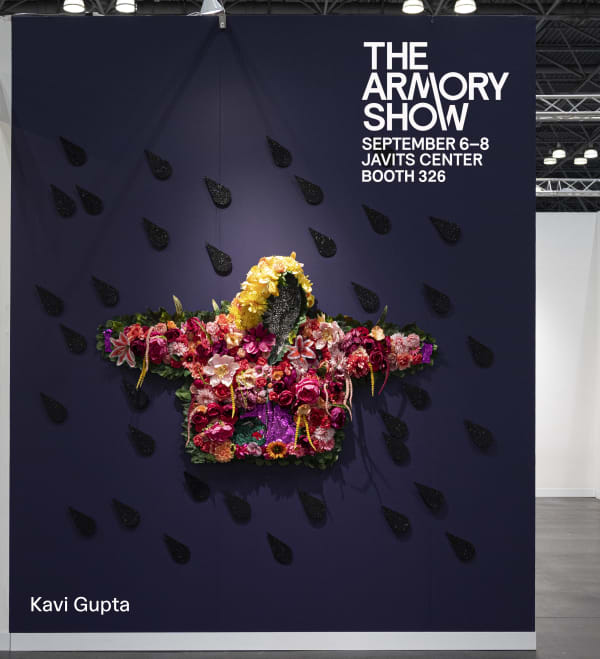
The Armory Show 2024
6 - 8 Sep 2024Booth 326 JAVITS CENTER 429 11TH AVENUE, NEW YORK, NY 10001 VIP Preview: Thursday, September 5 | 11 - 7 PM Friday, September 6 |...Read more -

Felix Art Fair 2023
15 - 19 Feb 2023Kavi Gupta welcomes the return of the Felix Art Fair, February 15-19, 2023 in Los Angeles. The elegant, boutique interior of the historic Hollywood Roosevelt...Read more -
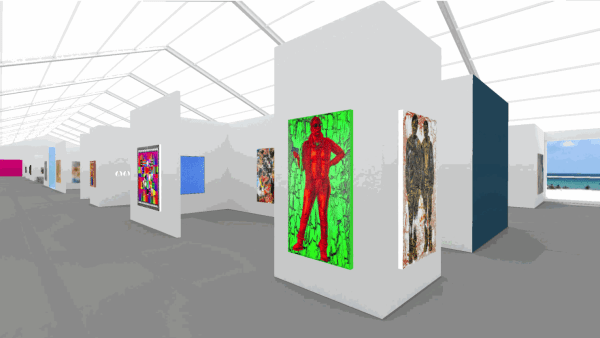
Untitled Art Fair Online 2020
30 Jul - 9 Aug 2020Kavi Gupta is proud to be a participating partner in UNTITLED, ART Online, the world's first VR art fair. Utilizing groundbreaking technology in unprecedented times,...Read more -
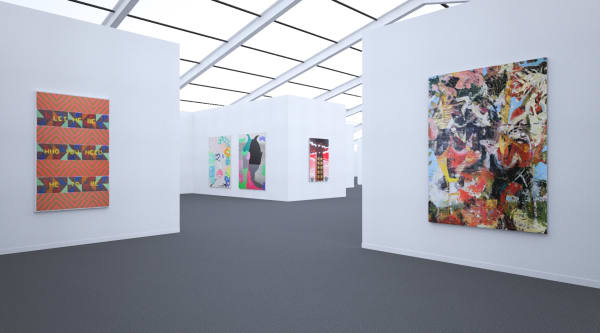
Frieze New York 2020
8 - 15 May 2020For Frieze New York 2020, Kavi Gupta welcomes you to an online presentation of extraordinary artworks from Jeffrey Gibson , Deborah Kass , Mary Sibande...Read more -
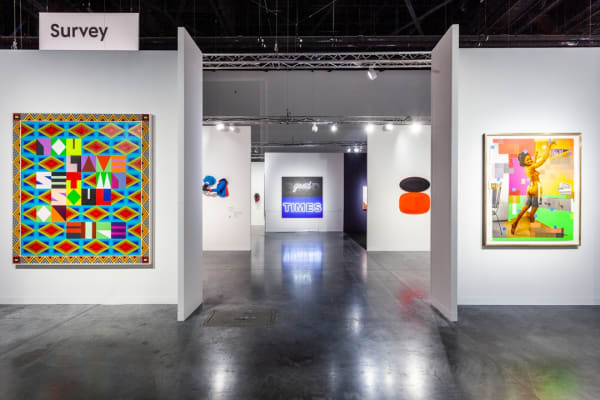
Art Basel Miami Beach 2019
4 - 8 Dec 2019Read more -
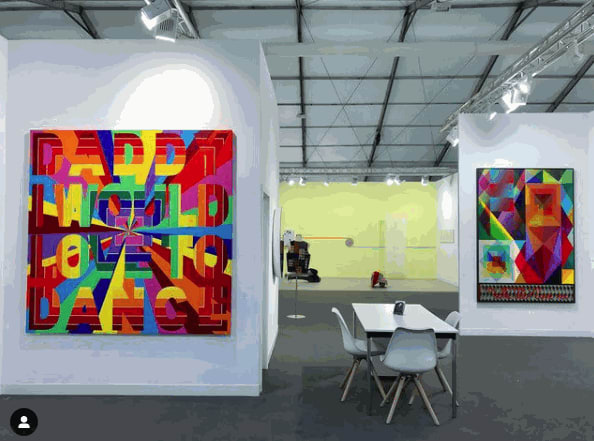
Frieze London 2019
3 - 6 Oct 2019Read more -
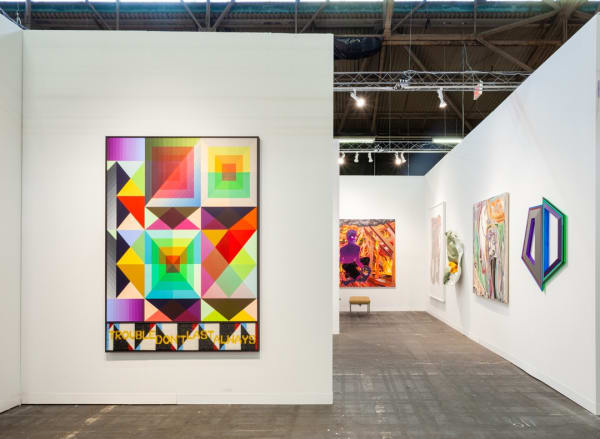
The Armory Show 2019
7 - 10 Mar 2019Kavi Gupta is thrilled to participate in the 2019 Armory Fair in New York City. Now in its 26th edition, The Armory Fair is a...Read more -
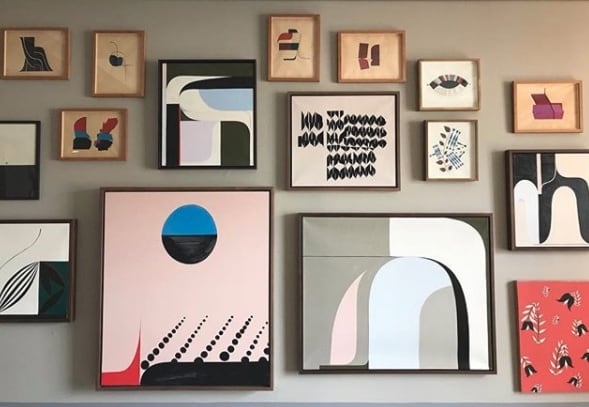
Felix Art Fair 2019
14 - 17 Feb 2019Kavi Gupta is pleased to be among 38 dealers invited to participate in the inaugural Felix LA art fair, which will take place from February...Read more -
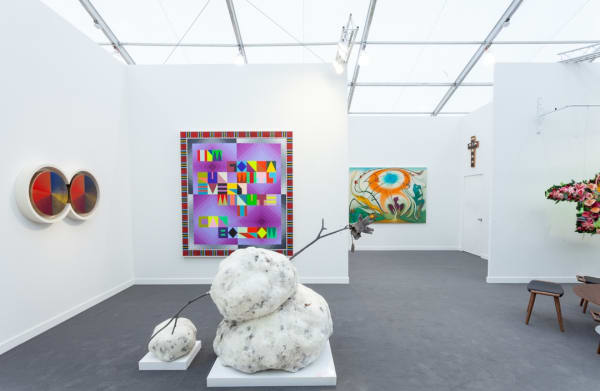
Frieze New York 2019
14 - 17 Feb 2019Kavi Gupta is pleased to participate in Frieze New York. Kavi Gupta Gallery will be located at Booth B22. For more information please contact 312-432-0708.Read more -
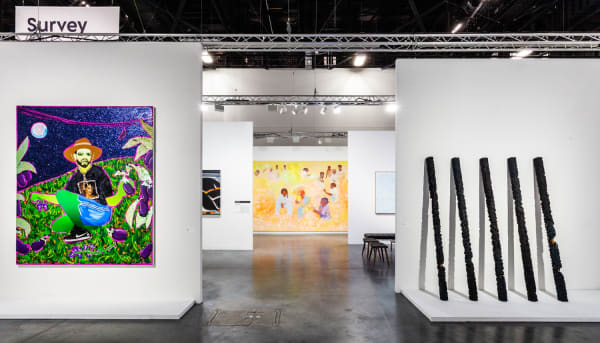
Art Basel Miami Beach 2018
6 - 9 Dec 20182018 has been a landmark year for AFRICOBRA (African Commune of Bad Relevant Artists), which was founded in Chicago in 1968 and defined the aesthetic...Read more -

Frieze London 2018
4 - 7 Oct 2018We are thrilled to announce that Kavi Gupta will participate in FRIEZE ART FAIR London 2018. Our curation for this vital international art fair embodies...Read more
-

Closing Celebration: Mapping Resistance: The Legacy of Black Liberation (1925-1975)
KAVI GUPTA | WASHINGTON BLVD. FL.1 10 Oct 2025Join us for the closing reception of Mapping Resistance: The Legacy of Black Liberation (1925-1975) at Kavi Gupta Washington Blvd. Fl.1. Spanning five decades featuring...Read more -
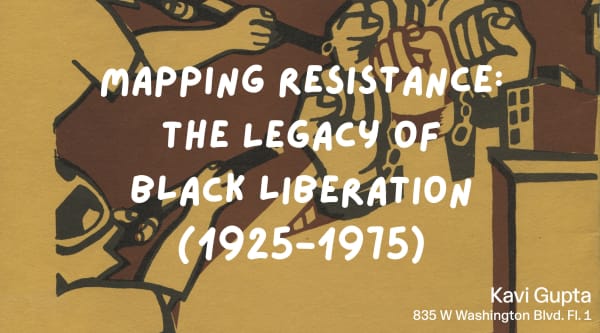
Opening Reception: Mapping Resistance: The Legacy of Black Liberation (1925-1975)
KAVI GUPTA | WASHINGTON BLVD. FL.1 25 Apr 2025Join us for the opening reception of Mapping Resistance: The Legacy of Black Liberation (1925-1975) at Kavi Gupta Washington Blvd. Fl.1 featuring director-led tours and...Read more -
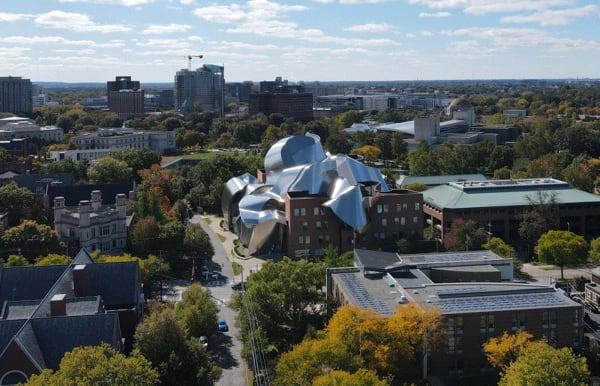
AFRICOBRA: Black Visions, Black Voices and the Power of Black Art
Case Western Reserve University 9 Apr 2024Members of the Case Western Reserve University community are invited to join the Siegal Lifelong Learning Program for a two-session remote program titled 'Black Visions,...Read more -
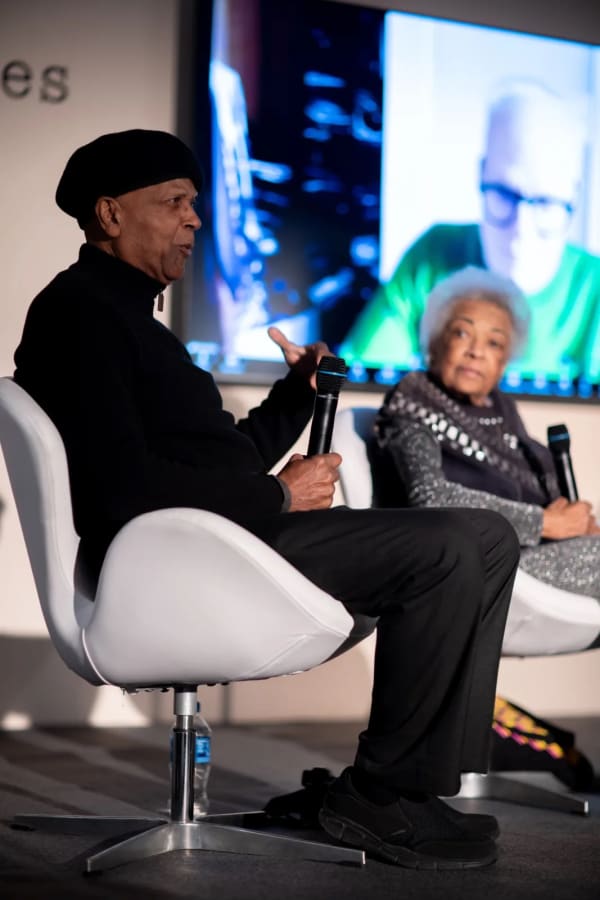
AFRICOBRA in Conversation with Hans Ulrich Obrist at EXPO Chicago
8 Apr 2022AFRICOBRA in Conversation at EXPO Chicago On Friday April 8 at 12 PM, as part of EXPO/DIALOGUES, internationally renowned Curator and Director at Serpentine Galleries,...Read more -
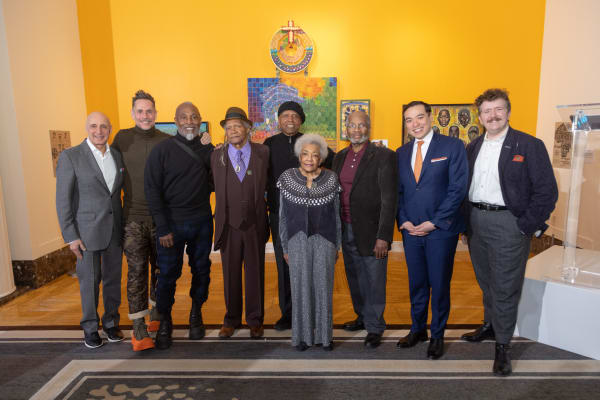
Opening Reception: Africobra, I Am Somebody
The Peninsula Hotel 8 Apr 2022On Friday, April 8, Kavi Gupta Gallery and EXPO Chicago celebrated the opening reception of I Am Somebody, featuring works by AFRICOBRA artists Sherman Beck,...Read more
-

AFRICOBRA: Art & Impact – Behind the Canvas
Dusable Museum November 3, 2024Read more -

AFRICOBRA: Everything is Connected: Art and Conspiracy | Met Exhibitions
The Met November 3, 2023Read more -
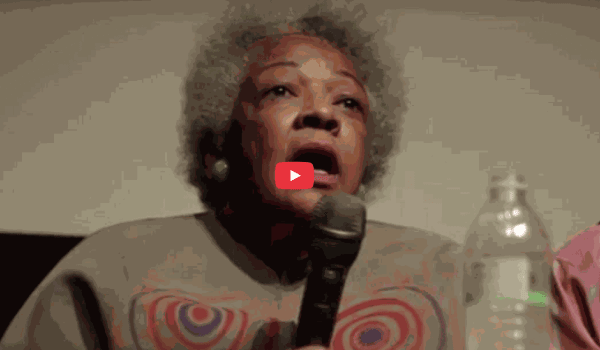
AFRICOBRA: Panel Discussion with Founding Members of AfriCOBRA
UChicago Arts November 3, 2023Read more -
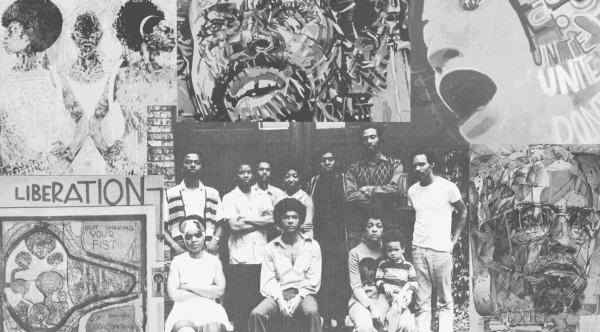
AFRICOBRA - Nation Time | Collateral Event of the 58th International Art Exhibition
La Biennale di Venezia November 1, 2023AFRICOBRA: Nation Time - Collateral Event of the 58th International Art Exhibition – La Biennale di Venezia. AFRICOBRA: Nation Time has been selected as an...Read more -
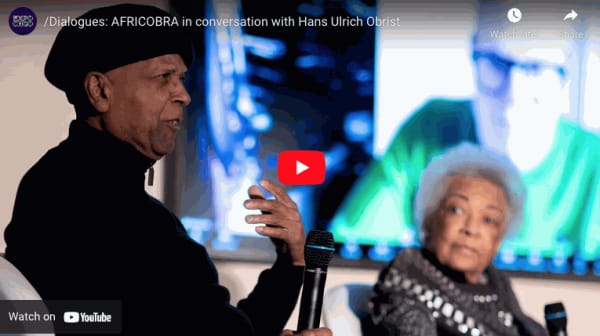
/Dialogues: AFRICOBRA in conversation with Hans Ulrich Obrist
Expo Chicago May 4, 2022Panelists | AFRICOBRA artists: Gerald Williams (SAIC 1966-67, Artist), Jae Jarrell (SAIC 1959-61, Artist), Wadsworth Jarrell (SAIC 1958, Artist), Sherman Beck (Artist), and other key...Read more -

Wadsworth Jarrell and Gerald Williams: Works on Paper, VR
July 29, 2021Read more -
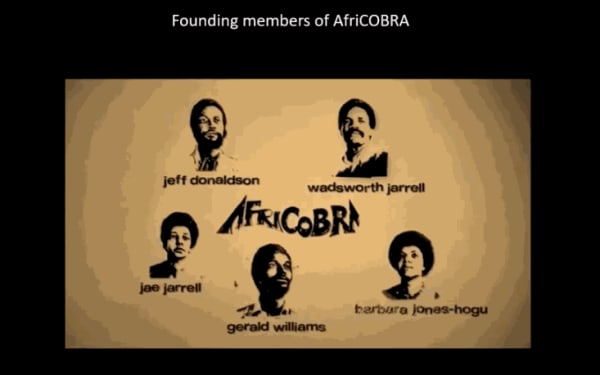
Leaders and Influencers: Three Figures in Black Art History
February 23, 2021Read more -
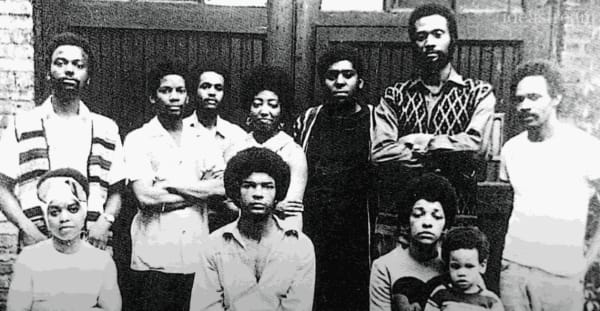
Wadsworth Jarrell's Book, "Africobra," Sets the Record Straight on Creating a Black Aesthetic
February 9, 2021Read more -
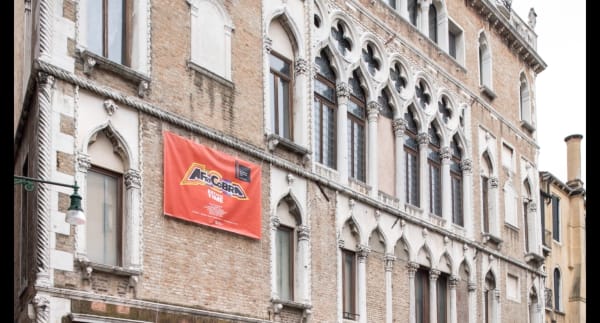
Celebrating AFRICOBRA
Kavi Gupta celebrates the one-year anniversary of AFRICOBRA: Nation Time at the Venice Biennalle May 21, 2020Kavi Gupta celebrates the one-year anniversary of AFRICOBRA: Nation Time at the Venice Biennalle, the two-year anniversary of AFRICOBRA 50 at Kavi Gupta in Chicago,...Read more -

"AFRICOBRA: Messages to the People" Artist Panel
The Museum of Contemporary Art North Miami February 15, 2019The Museum of Contemporary Art North Miami held a guided walkthrough of the exhibition with curator Jeffreen Hayes, Ph.D.. It was followed by a panel...Read more -
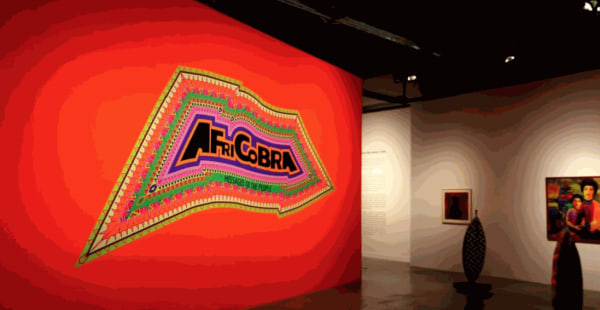
AFRICOBRA: Messages to the People, MOCA North Miami
January 11, 2019Read more -

AFRICOBRA 50 Exhibition at Kavi Gupta
October 23, 2018Read more -
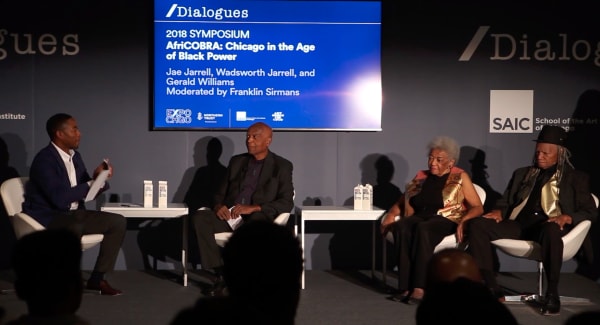
EXPO CHICAGO 2018 /Dialogues: AfriCOBRA: Chicago in the Age of Black Power
September 28, 2018Moderated by Franklin Sirmans (Pérez Art Museum Miami), this panel focused on the art of AfriCOBRA members Jae Jarrell, Wadsworth Jarrell, and Gerald Williams. Presented...Read more -
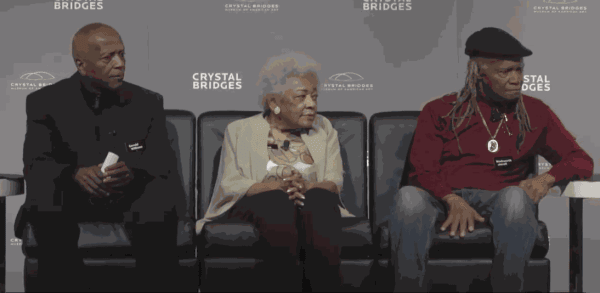
AFRICOBRA panel Discussion: Crystal Bridges Museum of American Art
March 12, 2018Read more -
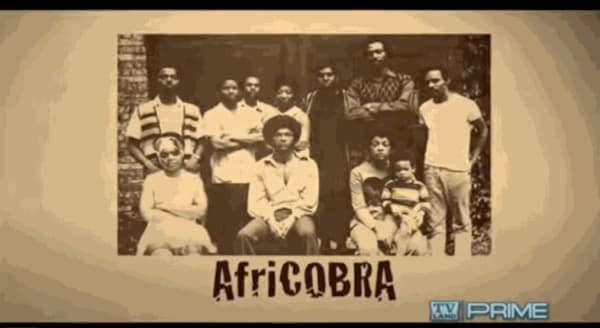
Art History Movements: AFRICOBRA | TVLAND Documentary
October 9, 2017Read more -
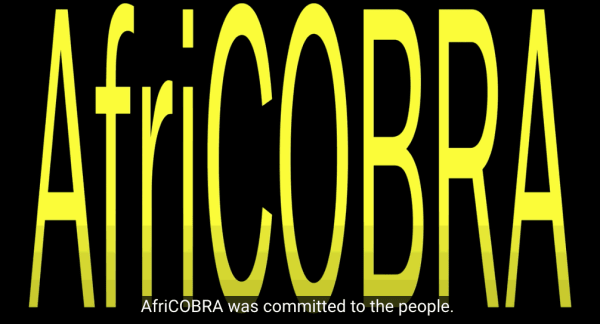
The Freedom Principle | AFRICOBRA | MCA Chicago
July 16, 2015Read more -
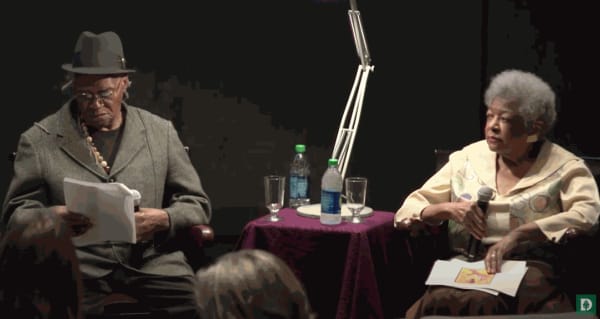
Jae Jarrell and Wadsworth Jarrell | Hood Museum of Art ARTIST TALK
November 18, 2014Read more
-
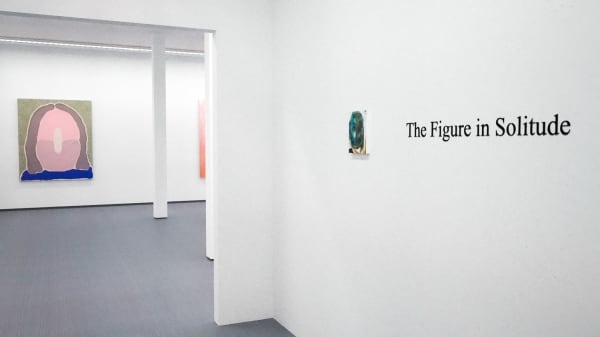
THE FIGURE IN SOLITUDE OPENS ONLINE
04.22.2020Kavi Gupta presents The Figure in Solitude, an online exhibition examining oneness.Read more -

INSIDE LOOK AT AFRICOBRA: NATION TIME IN VENICE
05.14.2019INSIDE LOOK AT AFRICOBRA: NATION TIME IN VENICERead more -
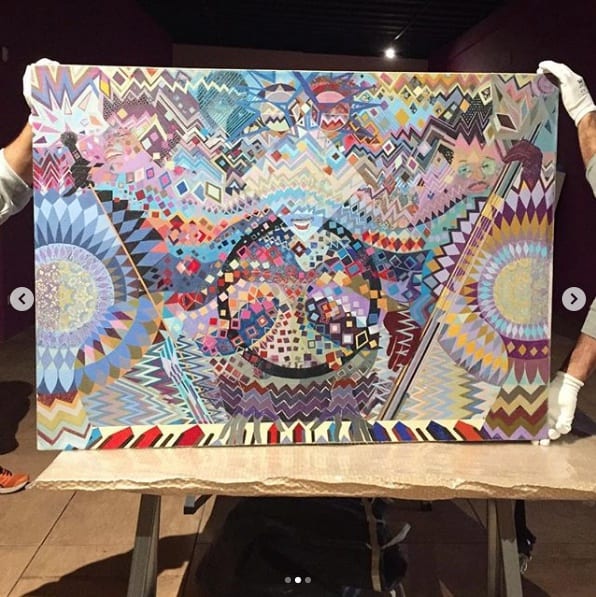
SNEAK PEEK: AFRICOBRA: NATION TIME @BIENNALEARTE2019
05.05.19Sneak peak at preparations for AFRICOBRA: Nation Time at the Venice BiennaleRead more -

AFRICOBRA IS GOING TO VENICE!
03.07.2019Africobra included in the 2019 Venice BiennaleRead more -

AFRICOBRA AMAZES ART BASEL AUDIENCES WITH NORTH MIAMI MOCA RETROSPECTIVE
12.11.18AFRICOBRA: Messages to the People opened to enthusiastically delighted crowds during Miami Art Week. On opening night, all of the surviving co-founders of the influential Black Arts collective were on hand.Read more -
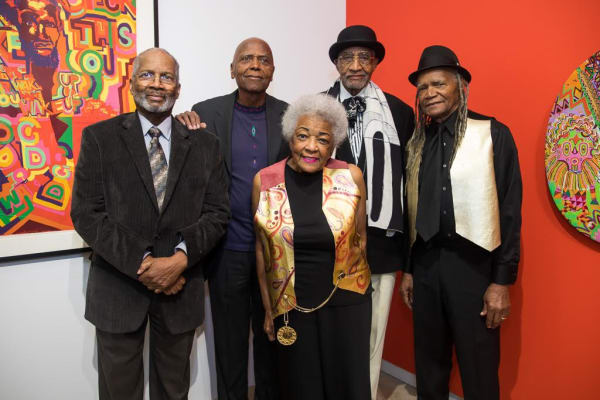
AFRICOBRA 50 OPENING
09.03.2018AFRICOBRA 50 opened last week at our Elizabeth Street location!Read more -

THE TIME IS NOW! FALL OPENINGS
09.19.2018Last week, "The Time Is Now! Art Worlds of Chicago's South Side, 1960-1980" opened at the Smart Museum of Art.Read more -

FIFTY YEARS OF AFRICOBRA!
09.11.18FIFTY YEARS OF AFRICOBRA! Fall 2018Read more


